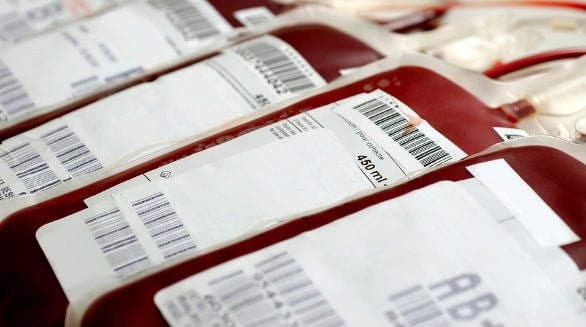
[bc_video video_id=”5637424560001″ account_id=”5374160583001″ player_id=”HJtnW6IQW”]
While I support the Food and Drug Administration (FDA) decision to eliminate the lifetime ban on blood donations by gay men, there are elements of the new policy that I do not agree with. Under the new policy, men must abstain from having sex with other men for 12 months before they can donate blood. To me, this year-long period of abstinence does not make sense, nor will it help to address the problems we face today.
It is important to have as many eligible blood donors as possible because the commitment from the general public to donate is sometimes forgotten as we get wrapped up in our daily routines. As a result, our nation continues to struggle in maintaining life-saving blood supplies in many areas and hospitals. Under the new policy, we will continue to have these issues as gay men remain limited as to when they can donate, so the pool of potential donors will not grow significantly.
Back in the 1970s, when HIV was first starting to surface in the United States, we did not have adequate testing for the disease, so more precautions had to be taken when it came to donating blood. Over time, standard testing was developed the looked for the immune system’s response to the disease, but scientists found that it could take anywhere from 3 to 6 months for a positive result to show up, so they had to adjust for the window of time after exposure where a person might test negative for HIV, but still be able to transmit the deadly disease.
As the epidemic grew, government bodies and the medical community began studying the incidence of the disease and found that gay men had a higher incidence and a faster growing rate of transmission than other groups, so the ban was put in place out of a lack of an abundance of caution and poor diagnostic tools.
It’s hard to say whether there has ever been an outbreak of HIV in transfusion patients from an infected gay donor because we did not monitor blood donations back then the way we do today. But I can say that since testing and understanding of the disease has improved, I think most of us in the medical community could agree that these men pose no greater risk to the blood supply than anyone else. In fact, in 2003, a heterosexual donor tested positive for HIV after having donated blood in New Zealand causing a major recall of $4 million worth of products made from the donor’s plasma, according to the New Zealand Blood Service.
We have made tremendous progress in the medical community on how we analyze blood. The sophistication of laboratory processing for the screening of HIV is quite advanced today. One has to remember that there is roughly a 7-10 day window between initial HIV infection, and when the virus can be detected in blood. According to the statistics, the probability of receiving an HIV-positive blood donation is one in 1.5 million for U.S. patients. The odds suggest our laboratories are doing a very fine job in screening our blood supply.
I cannot tell you the scientific reasoning for the one-year ban on sexual activity. This means that potential gay male donors will be asked “Have you had sex with another man within the last 12 months?” To me, that year-long abstinence policy doesn’t make any sense. The FDA must explain the chosen time period, and realize that gay couples who are in a stable, loving relationship are not going to abstain from having sex with their partner for an entire year just to be able to donate blood. The policy is still stigmatizing the gay community and is discriminatory, especially toward those who do not have any other high-risk factors like drug abuse.
I think the more pertinent question that should be asked of a potential donor should focus on the number of sexual partners they have had over the past year, and whether or not they have been tested for HIV within that same time period. If a donor has been tested in the last 12 months, I believe it is fair to document the results of that HIV test, that way you have multiple risk factors identified. However, the general rule for donors who are at a low-risk of HIV should be no more than a 30-day period of abstinence.
As it stands now, this new policy will only serve to confuse the American public, and I believe it was a hastily assembled plan to change an outdated, 32-year-old policy, without really addressing the issues. Unfortunately, this is typical of the FDA.
The FDA will begin taking comments on the new policy in the next 60 days, and I implore men and women of the scientific community and those who are knowledgeable on this topic to weigh in. I am encouraged by the change in policy, but I hope that the news is not inflated without rational scientific facts behind it. Adding confusion to the mix will further discourage people from donating blood, or may even cause them to be afraid of receiving a life-saving unit of donated blood when they really need it.
